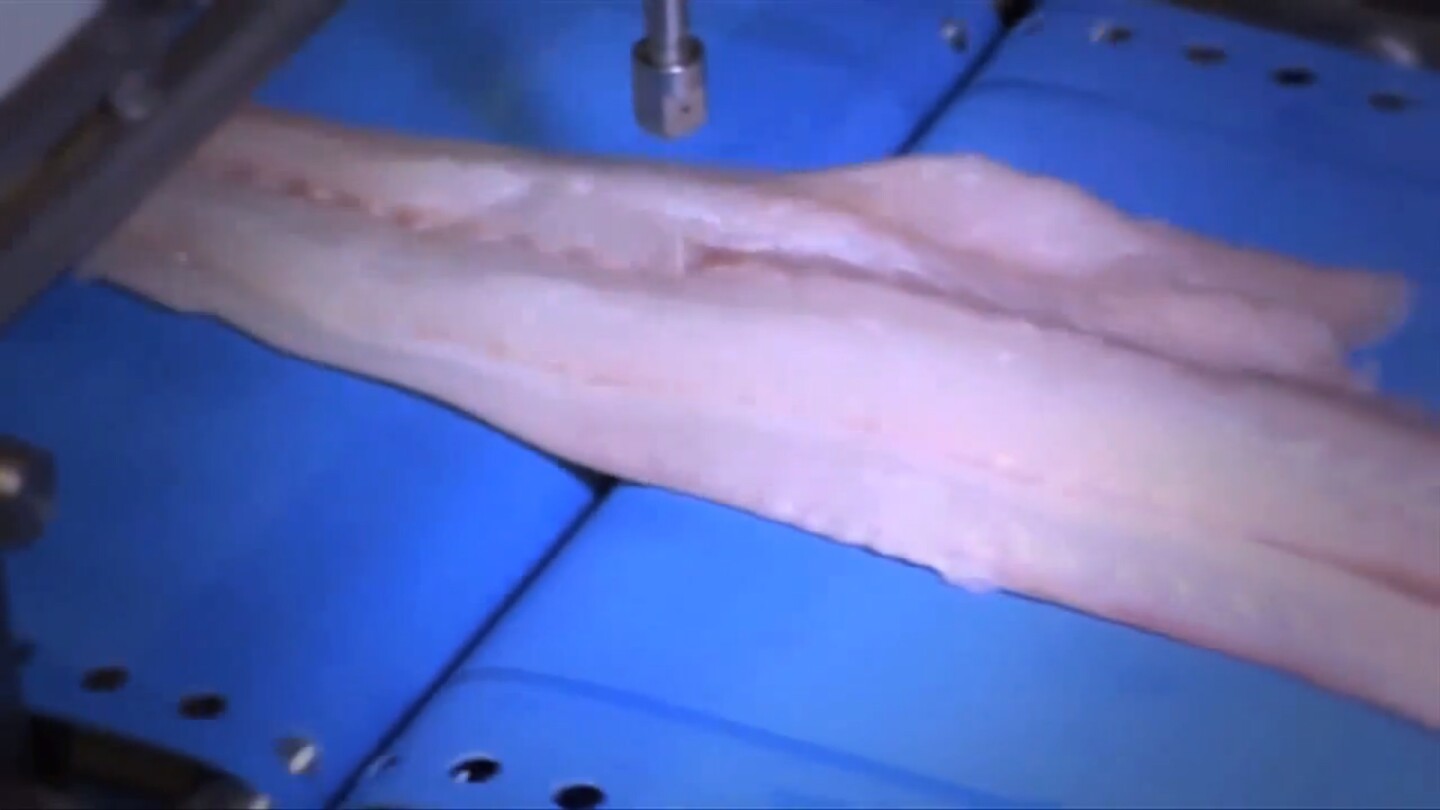Manual filleting of fish can be a time-consuming task. Due to higher salaries in Nordic countries, processing of fish caught there is often carried out in places like Asia, Eastern Europe and Russia where labor costs are lower, before the fish is returned to Scandinavia for sale. The APRICOT (Automated Pinbone Removal In Cod and WhiTefish) project set out in January, 2012 to find an automated solution that would keep fish processing local and it has now developed a machine that achieves just that.
Unlike farmed salmon, which are similar in size and shape and therefore suitable for automated machine filleting, the variability of wild-caught white fish such as cod has kept filleting of these fish a manual affair. As well as the high cost, manual filleting also results in three to seven percent of the most valuable part of the fish being cut away unnecessarily.
The APRICOT project has now developed a new robot that automates the process by using x-ray technology to locate the pin-bones in the fish and then quickly and precisely trim them away using water-jets. A prototype filleting machine has been built and is ready for testing. If it works as its developers hope, it could be filleting fish by next year.

Not only does the machine automate the time-consuming filleting process and guarantee boneless fillets, it also results in much less waste than manual filleting. This is according to Kristjan Halvardsson from Marel, an Icelandic company that worked with Sintef, Faroe Origin and Norway Seafoods on the APRICOT project, which was run by Nordic Innovation.
Rather than taking away jobs from humans, Norway Seafoods CEO Thomas Farstad says the technology actually creates new knowledge-based jobs while keeping at least some fish processing jobs in Scandinavia. Such jobs were under serious threat, with the number of Norwegian whitefish processing plants dropping from 100 to 10 over the last 40 years. This is despite Norway being the world's second largest exporter of fish.
The following video produced by Nordic Innovation details the benefits of the new processing machine.
Source: Sintef, Nordic Innovation





